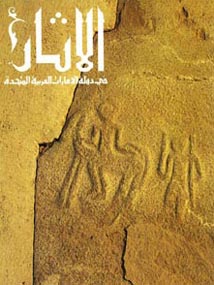Apolline Project: illuminating the dark side of Vesuvius
Welcome to the official website of the Apolline Project, a multi-disciplinary research project investigating the northern ‘dark’ side of Vesuvius– the ancient territories of Nola and Neapolis. Fields of study include archaeology, volcanology and paleobotany. Here you will find information about our work, especially the excavation of a post-79 AD Roman villa and baths at Pollena Trocchia near Naples. For those seeking more detailed information, links are provided to our reports and publications. An overview of the achievements and scope of the project can be found along with news about all the latest developments. In 2011 the project was awarded the European Archaeological Heritage Prize, to see why please follow the link. We are able to offer places on our excavations to volunteers and students seeking to develop their archaeological skills; more details can be found here. This site is continually being improved and updated and we thanks visitors for their patience and feedback as it continues to develop. Suggestions, comments and queries can be submitted at our ‘contact us’ page.
Benvenuto nel sito web ufficiale dell'Apolline Project, il progetto di ricerca multidisciplinare sul "lato oscuro" del Vesuvio, ossia il versante settentrionale del vulcano, e più in generale sugli antichi territori di Neapolis e Nola. Ti consigliamo di cominciare la navigazione nella sezione Vesuviani, ed in particolare le pagine sul nostro progetto-bandiera, lo scavo integrale delle terme romane di Pollena Trocchia, e sugli altri siti che stiamo investigando, come le "terme azzurre" di Lauro e la chiesa altomedievale di Roccarainola. I giovani esploratori possono scaricare giochini e vedere video. Incoraggiamo vivamente i docenti delle scuole primare e secondarie a mettersi in contatto con noi per organizzare progetti didattici e visite guidate ai siti archeologici dove operiamo. Se sei un archeologo, ti consigliamo di esplorare la sezione Academics, dove si possono anche consultare gli articoli che abbiamo prodotto finora. Se vuoi prendere parte alle nostre attività di scavo e ricerca, segui questo link. Se vuoi metterti in contatto con noi per saperne di più su quello che stiamo facendo o se vuoi visitare uno dei siti archeologici, non esitare a scriverci.
Apolline Project resources on the web:
- FastiOnLine: our entries in the largest database of archaeological excavations on the web
- Pollena Trocchia, località Masseria De Carolis: a post-79 Roman villa with bath complex
- Picasa Web Album: institutional photos of our sites and activities
- Flickr: artistic photos of Vesuvius and its surroundings
- YouTube: our official video channel
- FaceBook: messages and photos from our team and fans (don’t forget to “like us”!)
- RSS channel: subscribe it to receive notifications on our website updates
- Twitter: real time news, photos, and chats about what we’re up to
Web coverage of the Apolline Project:
(please note that this is a very small selection; for our press releases and printed press coverage, click here)
- NIKU: The Norwegian Institute for Cultural Heritage Research
- Il Denaro on the European Archaeological Heritage Prize
The Apolline Project team on Academia.edu:
- Girolamo Ferdinando De Simone
- Claudio Scarpati
- Monica Lubrano
- Caterina Martucci
- Nicola De Carlo
- Antonio De Simone
- Akira Matsuda
- Emilia Allevato
- Annalisa Marzano
- Robyn Veal
- Amanda James
- Gaetana Boemio
- Santa Sannino
- Vincenzo Castaldo
Partner sites:
- ArcheoLinks: a gateway for archaeological resources online
- European Association of Archaeologists: the largest association of archaeologists in Europe
- BloggingPompeii: the blog for all those who work on Pompeii and the other archaeological sites of the Bay of Naples
- Missione Archeologica Multidisciplinare Università di Tokyo Official Website
- Excavations in Somma Vesuviana Blog
- Culturart Associazione Onlus: our partner for the cultural activities on our sites
- Comune di Pollena Trocchia
- NIKU: The Norwegian Institute for Cultural Heritage Research
- Associazione Circolo Culturale B.G. Duns Scoto di Roccarainola Onlus
- Pro Lauro



































 Archaeology in the United Arab Emirates Vol.1 (1976-77) - English & French version
Archaeology in the United Arab Emirates Vol.1 (1976-77) - English & French version  Archaeology in the United Arab Emirates Vol.1 (1976-77) - Arabic version
Archaeology in the United Arab Emirates Vol.1 (1976-77) - Arabic version  Archaeology in the United Arab Emirates Vol. 2-3 (1978-79) - English & French version
Archaeology in the United Arab Emirates Vol. 2-3 (1978-79) - English & French version  Archaeology in the United Arab Emirates Vol. 2-3 (1978-79) - Arabic version
Archaeology in the United Arab Emirates Vol. 2-3 (1978-79) - Arabic version 

 Archaeology in the United Arab Emirates Vol. 5 (1989) - Arabic & English version
Archaeology in the United Arab Emirates Vol. 5 (1989) - Arabic & English version  Archaeology in the United Arab Emirates Vol. 5 (1989) - Arabic & English version
Archaeology in the United Arab Emirates Vol. 5 (1989) - Arabic & English version 









